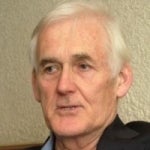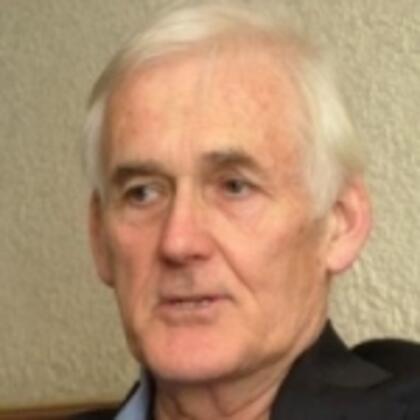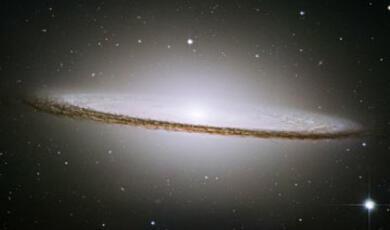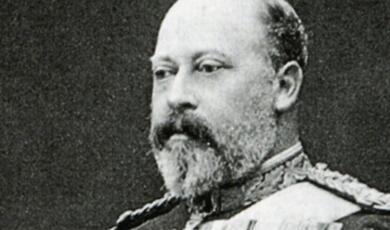Charles Dickens and Science
Share
- Details
- Text
- Audio
- Downloads
- Extra Reading
In his novels and essays, Dickens showed his considerable knowledge about the scientific developments in the 1850s and 1860s, which he wove into his stories and descriptions of London's life and environment. His brilliant essay on 'a new ology' describes how a science moves from its first tentative steps to mature general concepts, when they are often transformed into other areas of science and human understanding - a very modern perspective.
Download Text
16 June 2015
Charles Dickens and Science
Lord Julian Hunt
The common view
---------------------------
Like others, when I first read Charles Dickens’s novels, David Copperfield, The Pickwick Papers, Great Expectations, and Hard Times, I was bowled over by their great characters and their adventures in their vividly described Victorian milieux of school and business, law and and crime, on the beach at Yarmouth or in London’s foggy streets.
Everyone who reads Dickens has their own reactions and maybe learns different lessons; I laughed a lot, to the annoyance of my wife, as I took many weeks slowly reading of Dombey & Sons amid the changing scenes of North London and the arrival of the railways. My cautious approach to finance has probably benefited from Mr Micawber’s advice that if one’s income only just exceeds expenditure that leads to happiness, but if otherwise then misery. But I did not think then that I was reading novels written by someone with a deep appreciation of science and its wider intellectual and cultural connections.
Furthermore, as I shall argue, Dickens had original and important ideas about how science develops, which he illustrated in his writing about the roles of scientists and their lives. We should remember that the word scientist was only introduced by William Whewell in 1833, a historian and philosopher of science, who invented some important terms of physics such as anode and cathode. He said we need very much a name to describe a cultivator of science in general. I should incline to call a physicist or chemist as a scientist, just like an artist is a musician, painter etc. Up until then, scientists were often called philosophers, as Captain Fitzroy called Charles Darwin-abbreviated to philo- on their 5 year voyage on HMS Beagle.
Like most readers I generally thought of Dickens as being highly critical of the social and environmental consequences of the scientific and industrial revolutions of the nineteenth century. This was the moral aspect of his novels that the literary critic F R Leavis so much admired. It did not seem to be connected to science. Dickens described and campaigned about the dangers and ill health caused by the polluted atmosphere and rivers in his novels, Little Dorritt and David Copperfield ‘slimy gaps and causeway winding among old wooden piles; rags of handbills offering rewards for drowned men…’ He campaigned in his magazine House-hold Words about London’s Great Stink with an article on ‘A way to clean rivers’ in 1858. His and others efforts soon led to legislation and practical schemes of J. Bazalgette. But politicians generally refer to Dickensian as simply a term of environmental frightfulness, not as a reference to a man who really tried to understand and deal with such problems. As for example in the well-meaning but perhaps misguided remarks of the leader of the Green Party in the House of Commons Caroline Lucas did a few years ago, (which remarkably was reported in the Guardian).
A reassessment
---------------------------
My view of Dickens’s interest in science changed completely when I read his last novel Our Mutual Friend, published in 1865, which revealed his considerable knowledge of the great developments in science and how these had become part of ordinary people’s understanding of the world around them, although this point has been missed by most critics of Dickens’s writing as well as by his biographers.
As I learnt from Prof Giles Foden, of UEA, Dickens had written about science over many years in the magazines that he edited and managed, Household Words and All the Year Round. These publications approved of by the Morning Chronicle as a very good 2penny worth, covered current affairs from politics to railways, and even science policy.
Dickens expressed his general ideas about how new fields of science emerge in his essay on ‘History of a young ology’—in All the Year Round vol 6 (1861), p186-190—his own term for the new sciences of the past two centuries notably of geology and ethnology, formerly mere departments of natural history. Meteorology, archaeology, etc are other examples of new sciences.
His first point was that in the early years of an ‘ology’ there may be a ‘vast multitude of results’ that might not be ‘very accurate or very interesting’. He also recognised that individuals are important, especially at this stage, as in his attribution of progress in the new science of meteorology to Dr Dalton of Manchester, ‘whose greatest work was the establishment of atomic theory’. Dickens approved of Dalton’s early advocacy of popular engagement to advance natural sciences-which is so much easier today with widely available instruments, computers and communication.
The second point is that no accurate science is popular until people have begun to generalise from the facts. The wider and more inclusive the generalisations, the more interest do they possess. He illustrated this idea in the field of meteorology, as it developed connections with other sciences such as aurora, magnetism and thermodynamics. Henri Poincaré, the famous French mathematician and astronomer, had a similar concept, as he explained in Science & Method (1905), when he explained how success in mathematical research is not only when ‘a lengthy calculation leads us to should lead us to a simple an striking result, but that we are not satisfied until we have shown that we might have foreseen …its most characteristic features. Then the semi-intuitive result might be adapted to other problems of a similar nature –preferably with simple arguments summarized in a few lines.’ When I showed Poincare’s book to my professor George Batchelor in Cambridge, he said this should be the aim of all of us (in applied mathematics!) Of course hard science has to be done before the fog of research clears and the new ideas emerge.
In George Eliot’s novel Middlemarch (1874), she describes the pleasure scientists experience in thinking about the wider connections about their particular discoveries, as the hero Dr Lydgate ‘stretched his legs …in the agreeable afterglow of excitement when thought lapses from examination of a specific object into a sufficive sense of its connections with all the rest of our existence.. Lydgate felt a triumphant delight in his studies and something like pity for those less lucky men who were not of his profession’’.
The leaders of science today perhaps could be more encouraging about this approach to explaining and progressing research, even if they still cannot agree on whether and how best to encourage new ‘ologies’. But they generally agree with Dickens’s—and later Poincaré’s—views about the value both of explaining science to the wider public and of making connections between the different branches of science.
Dickens’s general view of science, which most journalists and politicians share today, was that there would be greater progress even at a technical level, if science were explained better to the public and indeed to other scientists. His more profound and ambitious objective, in which should inform the public so effectively that it would enable those who became interested in science to explore for themselves the wider implications of certain scientific ideas- as with chaos theory, or evolution, or in the sixteenth century’s the early idea of Hobbes relating momentum and memory. Dickens use of the word ‘popular’ is connected to a deeper scientific appreciation and, to use the modern idiom, a greater public involvement in scientific issues. In his essay he connected interest in science to the practical uses of weather forecasting and telegraphic communications.
Dickens made use of these broad ideas in his novels, he was surreptitiously popularising science as he wove the latest observations and even theories into the plots of his very human and apparently ‘unscientific’ novels. In at least one case, like other writers before and after him, by generalising certain ideas then current, he even proposed an important scientific concept before it had been considered in the scientific literature.
Satire and praise
----------------------.
At the same time Dickens poked fun at scientists and their supporters—but no more than he did in all his books with respect to every professional and business character. In Hard Times, written in 1851, he ridiculed the standard school-masterly view of science as being a matter of ‘stick to facts Sir—rout out everything else’. He also mocked the amateur scientists who met at the Pickwick Club, driven ostensibly by pure curiosity, in order to consider ‘speculations on the source of the Hampstead Ponds with some observations on the theory of tittle bats’. This was a gentle satire on the British Association for the Advancement of Science, which was set up in 1836 to popularise science and its applications. In a way Dickens was taking both sides of the nineteenth century philosophical debate (recently reviewed by R. Reeves 2008) between J.S. Mill and W. Whewell about whether science was simply to be judged by its ‘utilitarian’ and numerical effectiveness for society or by its ‘intuitional’ value of providing inspiration and understanding
In Our Mutual Friend the gloomy wine waiter who, at a dinner party, pours out a dodgy Chablis—apparently a common problem then—is compared to an Analytical Chemist, saying under his breath ‘you wouldn’t drink this if you knew what it is made of.’ In Dickens’s view any scientist in the City was also suspect, forming dubious companies like Collapse, Vortex, Docket & Company. He obviously had high-tech fluid dynamists in mind.
But when it came to individual scientists Dickens wrote admiringly about them in his essays, particularly those whose work he used in his novels. John Dalton of Manchester, famous for his discoveries in chemistry, also wrote on meteorology. Dickens reviewed the latter in one of his essays, and meteorology then appeared again in Oliver Twist—in the wintry scenes of snow blown about in extraordinary patterns by the wind. Dickens also learned of the fearsome ocean waves experienced by the transatlantic travellers in Martin Chuzzlewit from the pioneer American Navy oceanographer and meteorologist, Lieutenant Maury:
“countless miles of angry space roll the long heaving billows. . . a boiling heap of rushing water . . . mad return of wave on wave, . . ending in a spouting-up of foam that whitens the black night; incessant change of place, and form, and hue; . . . louder howls the wind, and . . . the wild cry goes forth upon the storm ‘A ship!’”
Artist and naturalist
----------------------------
The science in Dickens’s novels usually connects nature with people and animals. In the opening page of Bleak House (1852) one reads a naturalist’s notebook transformed into art:
Fog everywhere. Fog up the river, where it flows among green aits(islands) and meadows; fog down the river, where it rolls defiled among the tiers of shipping, and the waterside pollutions of a great (and dirty) city. . . Fog creeping into the cabooses of collier-brigs; . . .Fog in the eyes and throats of ancient Greenwich pensioners, wheezing by the firesides of their wards; fog in the stem and bowl of the afternoon pipe of the wrathful skipper, down in his close cabin; fog cruelly pinching the toes and fingers of his shivering little ‘prentice boy on deck. Chance people on the bridges peeping over the parapets into a nether sky of fog…. as if they were up in a balloon, and hanging in the misty clouds.
One is reminded of Oscar Wilde writing in 1889: only artists enabled people to ‘see fogs, not because there are fogs, but because poets and painters have taught them the mysterious loveliness of such effects. There may have been fogs for centuries in London. But . . . they did not exist till Art had invented them.’
Of Darwin and Kelvin
---------------------------------
But no Oscar Wilde could have conjured up the extraordinary geological perspective that Dickens used in the same passage in Bleak House(1852) to deepen the mysterious gloom of the London scene:
As much mud in the street as if the waters had but newly retired from the face of earth, and it would not be wonderful to meet a Megalosaurus, forty feet long or so waddling like an elephantine lizard up Holborn Hill. Smoke lowering down from chimney-pots, making a soft black drizzle, with flakes of soot in it as big as full-grown snow-flakes—gone into mourning, one might imagine, for death of the sun.
This passage reflected the great interest in the dinosaur period of geology and the discoveries of parts of huge skeletons all over Europe. Scientific societies had generated considerable excitement and publicity which is why such a remarkable reference appears on page one of a popular novel.
Dickens’s last novel Our Mutual Friend (1865) touches on a range of science.
It was written after the huge publishing success of Darwin’s Origin of Species in 1859 which had created so much popular and scientific interest in every aspect of the early history of homo-sapiens and the origins of every other animal and plant species. Part of the reason for its immediate interest was because the book built on the geological developments as well as the studies of existing species. Like Dickens, Charles Darwin himself was interested in many of the public scientific issues at that time, considerably outside biology and geology.
At the same time in the 1850’s and 1860’s there were also great developments in classical physics and mathematics across Europe which raised huge public issues and debate, with scientists like William Thomson ( Lord Kelvin) and Sir George Stokes taking a prominent public role.
The most dramatic scenes in Our Mutual Friend is about a poor family living in the East End of London, alongside the polluted Thames and in a darkening, and equally polluted atmosphere. Dickens refers to a then current apocalyptic explanation of the darkening as being caused by the fading strength of the Sun.
‘While the Sun itself, when it was for a few moments dimly indicated through circling eddies of fog, showed as if it had gone out and were collapsing flat and cold’.
Several literary studies (eg Brantlinger in a Companion to the Victorian Novel 2002, Blackwells) have suggested that this passage refers to the recent scientific studies by William Thomson, Lord Kelvin in 1862, following the earlier eighteenth-century analysis by Pierre Simon Laplace in Paris, which concluded that the sun’s power would gradually run down, and even more profoundly because of the ‘heat death of the universe associated with universal rest and increase of entropy-the consequence of the recently discovered second law of thermodynamics. This was quite as serious a concern in the 1860’s as global warming is today. Darwin said that ‘Thomson’s view of the age of the earth is one of the world’s sorest problems!’
This theory was eventually proved to be wrong because it did not include the enormous thermal energy that would be released into the universe to a small extent by radioactive decay –discovered by Becquerel and the Curies around 1900-, and then to a much greater energy by nuclear fusion will keep the sun going for several billion years more- as discovered and proved by hydrogen bombs and in labs in the mid-1900s.
Conversational Science and Breakthroughs?
----------------------------
Some novelists use conversations as a very effective way of introducing scientific ideas into their novels. In Our Mutual Friend, again, the Gaffer’s children Lizzie and Charlie sit in their riverside house looking at the burning coal in the grate, waiting for their father to come home.
‘Then as I sit a-looking at the fire, I seem to see in the burning coal—like where that glow is now—it comes like pictures to me Charlie.’
‘That’s gas, that is,’ said the boy, ‘coming out of a bit of a forest that’s been under the mud that was under the water in the days of Noah’s Ark. Look here! When I take the poker—so—and give it a dig . . .’
After being asked to think, earlier, about the mysterious future of the Sun, here the reader is taken on an imaginary journey back through time to some prehistoric era—of which many of Dickens’s readers would have heard in the recent public debates about Evolution and the age of the Earth.
In the scenes on the Thames an old man is being rowed by his young daughter in a small boat among the barges and sailing ships. She is horrified as he collects floating bodies for the sake of the few coins in their pockets. The description of the watery environment, on which their livelihoods depend, is focussed on the ripples, waves and eddies produced by boats and tidal currents. (Dickens’ had written about his fascination with water ripples and boats in the diary of his American journey when he travelled diary of was ‘for two days we toiled up this foul stream (Mississippi) striking constantly against the floating timber ….When the nights are very dark, the look-out in the head of the boat knows by the ripples of the water (ie their sound ) if any great impediment be near at hand and rings a bell beside him which is the signal for the engine to be stopped …it is no easy matter to remain in bed!’)
One evening the father is out on the Thames and on his own boat fails to return. The drama later moves to the water’s edge, where the waiting of the family group becomes ominous…As elsewhere in this novel, the protagonists are carefully observing their surroundings:
‘At this time of their watch, the water close to them would be often agitated by some impulsion given it from a distance. Often they believed this beat and plash to be the boat they lay in wait for, running in ashore; and again and again they would have started up, but for the immobility with which the informer, well used to the river, kept quiet in his place.’
This is a significant statement (which really impressed me when I first read it) in which one could say that art is benefitting from science which perhaps has been proposed by an artist? A new concept has been introduced about the way that a boat produces a confined motion of a water surface, which travels over an appreciable distance. This motion, which could be an eddy or a vortex or a wave, has an ‘impulsion ’-normally referred to as an impulse. This means the motion produces a force on say another boat or will create a disturbance when it reaches the shore. In fluid dynamics and mathematics this is a subtle and complex idea—still being studied today in different situations—because, although a vortex or a wave produces motions over a wide area and in different directions, there is overall a net forward motion and force.
Dickens cannot have got this idea from those scientific papers on the subjects that are best known to us. Although H von Helmholtz, a great German physicist, mathematician and biologist of hearing (all aspects of fluctuations and waves) had discovered the basic principles about the motion of vortices, another German Gustav Kirchoff wrote the first paper on the impulse associated with vortices concept in 1869 four years after the novel was published, so Dickens could not have read Kirchoff; nor was Kirchoff influenced by Dickens. Kirchoff’s idea was later elaborated and publicised by Lord Kelvin, to become known as ‘the Kelvin impulse’.
One can think of examples where art foretells advances in science and technology, such as the planets of Mars suggested by Swift in Gulliver’s Travels or Jules Verne’s travels by rocket in space and underwater, by submarine.
But I don’t think Dickens actually worked out this advance in fluid dynamics. If not, then where the Dickens did he get such a technical idea? Probably, in my view, from John Scott Russell, a railway and ship engineer who worked as the railways editor for Dickens in the Fleet Street office of his newspaper, Daily News. Russell was a graduate of Glasgow and St Andrew universities where he had done some teaching and construction of steam driven road carriages –one of which crashed with fatal results. He moved to London in the 1840’s. In his ship designs, he was the first scientists to identify how waves had a force associated with them. His was first interested in waves when he observed on the towpath of a canal near Edinburgh, the ‘solitary’ wave or little mountain of water that moves under its own dynamics for a few miles along the canal when a barge suddenly starts to move. In a famous experiment, which he reported to the British Association in 1845, he measured the speed by galloping at about 15mph along the towpath of the canal. The constant behaviour of this moving wave was proved later in mathematical papers by Lord Rayleigh and J. Boussinesq in 1870’s. He then applied this observation to the design of steel ships—he was involved, with Isambard Brunel, in the construction of the Great Eastern launched (sideways) into the Thames in 1858. As he had explained to the Royal Institution on June 2 1848 (with the Duke of Northumberland in the chair) in a lecture ‘On the wave principle applied to the construction of ships’, he explained that ‘the amount of moving power required to move a vessel will vary with the bulk of the water disturbed either side of the bows of the ship –in fact this volume is less than that of the immersed portion of the vessel’. This conclusion led to the sharp bows of clipper sailing ships and steam ships.
It seems very likely that Dickens would have heard all about this from Russell at the offices of the Daily News. He might have remembered when he was writing Our Mutual Friend 15 years later. But I can find no proof. Nor can I find any correspondence between Dickens and Russell on this topic. G. Emmerson, in his biography of Russell (1977), makes any reference to conversations the two may have had in their newspaper office.
Returning again to the expectant party on the river, as they counted the hours, they made a further interesting observation.
The wind carried away the striking of the great multitude of city church clocks, for those lay to leeward of them; but there were bells to windward that told them of its being One – Two – Three.’
The fact that sound is apparently only carried downwind had been established experimentally in the 1850’s; this is (still) surprising because the speed of sound, measured by Isaac Newton among many others, is much faster than wind speed near the ground. But in the 1850’s John Tyndall and Sir George Stokes had explained how, because wind speed increases with height above the ground, the wind bends sound waves upwards from downwind sources of noise, so that they cannot be heard on the ground in the upwind direction. Dickens’s text perhaps implies that this is another new discovery, and in yet another new field of science, in this case acoustics. Sound waves and the acoustical design of large buildings and concert halls was the subject another of Scott Russell’s lectures at the Royal Institution.
Scientists, Engineers and Society
Dickens’s thoughtful writing about science and its contributions to his novels is consistent with his affirmation in the last decade of his life about the broadly beneficial effects of science and technology on the nation and on people’s lives. Peter Ackroyd’s biography explains that, despite Dickens’s reservations about the nationalistic tenor of the Great Exhibition of 1851, ‘at the very end of his life he was praising the major discoveries and inventions of his period’ that romantic idealists like Ruskin and Morris disparaged. I would agree with Ackroyd’s conclusion that ‘In that sense Dickens was very much a modern man, very much a man of his period, and highly sceptical about “the good old days’’. Dickens’ journalistic colleague Scott Russell showed the excitement and practical importance of applying science and engineering, but he was also concerned that the British business should make every effort to make commercial use of these developments. Russell and others involved in holding the Great Exhibition of 1851 expressed their concern that companies in USA and Germany were already overtaking British business for 3 main reasons –they were y using British inventions such as the wave line design of ocean and river steamers and even yachts; they were employing more highly educated staff. They also had a prejudice in favour of novelty!
Scientists can certainly learn something, even today, from Dickens’s summary of the three stages in the development of ‘ologies’. Most accounts of science focus on stage 1; data, ideas, and corrections (which does not mean rejection as Popper and Lakatos have forcefully explained). Stage 2 involves explaining and popularising the utilitarian, inspirational and aesthetic aspects - I suppose Research Councils might call this ‘impact’. But scientists should simplify and summarise for their own benefit in order to move on to the next step in their science-as Poincare explained. But Dickens’ Stage 3 of generalising ideas from one branch of science to another is not generally part of the job of a scientist. It is a pity because they do not appreciate what pleasure and interest this aspect has in discussions with other scientists and in quiet contemplation-as George Eliot reminds us. An increasing number of popular books have addressed this aspect of science. For example Gleick’s wrote about the widespread application of the ideas of Chaos theory or evolution of systems. Cross-disciplinarity is essential for tackling great problems of our times. But many scientists regard this approach with considerable suspicion, as one has seen recently when economists or political scientists receive suggestions from scientists working in engineering or biological systems. Perhaps we need more Pickwickian brain storming meetings on Hampstead heath?
This article is based on a talk given at University College London in March 2012
© Lord Julian Hunt, June 2015
This event was on Tue, 16 Jun 2015
Support Gresham
Gresham College has offered an outstanding education to the public free of charge for over 400 years. Today, Gresham College plays an important role in fostering a love of learning and a greater understanding of ourselves and the world around us. Your donation will help to widen our reach and to broaden our audience, allowing more people to benefit from a high-quality education from some of the brightest minds.


 Login
Login







